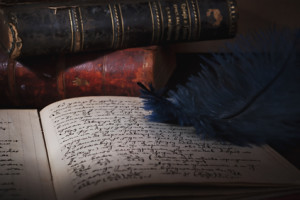 One of the most difficult things to starting your book is completing your first draft. Writing can be complicated because when we write we wear two hats – that of a writer and that of an editor. The tricky part is separating the two without jeopardizing the completion deadline of your first draft.
One of the most difficult things to starting your book is completing your first draft. Writing can be complicated because when we write we wear two hats – that of a writer and that of an editor. The tricky part is separating the two without jeopardizing the completion deadline of your first draft.
What exactly is a first draft? It is the first summary that a writer puts together to begin his story or novel. It doesn’t have to be pretty, polished or perfect because it is just the beginning of a story to be told. It is a writer’s “true” starting point. This first summary is necessary to getting your book completed and published. It is also the first step to other drafts that are sure to follow. Keep in mind that without this first draft you won’t get to the next phase. All the edits, the rewriting, the polishing, the correct points of view, the scenes and dialogues will be enhanced in future drafts. Future drafts may even require that you lose or add characters but that should not be your worry at this stage of the game. It is just important that you get your story written. That should be the total focus.
If you are like most writers, it will take this draft and many more to perfect your story or novel. Only a few writers are lucky enough to get it right the first time or with a couple of edits. The majority of writers are not. But that is the art and skill of writing – knowing what comes first and how to polish your product to publication. Your writing skills will be tested in other drafts and in the final product. This is where you will “showcase” your techniques to produce that literary masterpiece. There are many techniques to getting the perfect story or novel to a publication stage. These methods are as varied as there are authors. The important thing is to finish the first draft of your novel.
Remember to remove your editor’s hat until you have completed the first draft. This can be difficult but it must be done to move forward. You can put your editor’s hat back on as you work with future drafts but not until that first draft is written. Writers use many strategies and techniques to completing their literary works. Here is a quick list to get you started in the right direction.
- Don’t worry about the craft or technique of writing at the first draft stage. Just remember to keep your story moving and get your story down on paper.
- Develop a habit for writing – set a time. Be consistent and diligent about keeping that appointment. Unless it is something dire, do not cancel this appointment with yourself.
- Write in small chunks – write for no more than 30 minutes at a time. Allow yourself breaks. Be creative and let the juices flow. Be uninhibited.
- Do not edit your first draft – keep pencil to paper and keep the story moving until you have completed the summary. Your editing skills will be needed in the upcoming drafts and final version of your story or novel. Don’t worry about punctuation, grammar, writing techniques, dialogue or scenes at this stage.
- Set milestones and target dates to get your first draft completed. Milestones can be as simple as 1,000 words per day or less if your schedule does not allow anything more. Set target dates that are attainable least you get discouraged.
Remember – the important thing is to finish your FIRST DRAFT!




